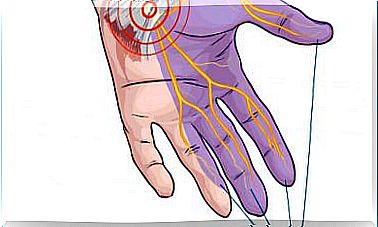What Is Vitamin A?
Vitamin a It is a fat-soluble vitamin that occurs naturally in some foods. It comes in the form of retinol in products of animal origin and in the form of provitamin A in vegetables. Like all vitamins, we need it in small amounts to stay healthy and, therefore, it is necessary to ingest it on a daily basis. What is it for?
What are its functions and benefits?
Vitamin A is necessary to develop different functions in the body. For this reason, it has varied effects on multiple systems. We will detail it below.

Immune system
At first it was known as the “anti-infection” vitamin, as it is key to the normal functioning of the immune system. Prevents infections, especially the respiratory system, such as throat infections, pharyngitis, sinusitis, bronchitis, etc.
Reproduction and development
Vitamin A plays an important role in embryonic development, according to an article published in the journal Nutrients. This is one of the oldest known functions. A deficiency of vitamin A during pregnancy can trigger problems in the formation of the urinary tract, the diaphragm or the kidneys in embryos.
Eye protection
It is the vitamin of vision par excellence. Adequate levels of vitamin A allow light to be converted into electrical signals interpretable by the brain. It also improves vision and prevents night blindness (problems seeing well in low light conditions), as stated in a study published in the journal Sub-cellular Biochemistry.
In addition, thanks to its antioxidant effect, it helps prevent some eye diseases: presbyopia, macular degeneration, cataracts, glaucoma, hyperopia, myopia or retinal detachment.
Antioxidant
It is a great antioxidant. As such, it has the ability to help prevent the development of some degenerative diseases such as Alzheimer’s, chronic heart and lung diseases. It could also offer protection against the development of other non-communicable diseases, such as cancer.
Skin and mucous membranes
Participates in the maintenance of the skin and mucous membranes; with which it becomes a perfect protector of these tissues (especially those of the digestive and respiratory tract). In addition, it is necessary for a good repair of the tissues, being a good remedy in the healing of wounds in the digestive tract, such as ulcers or diverticula.
For some time now, many cosmetic products have incorporated vitamin A as one more ingredient. Its positive effects are known to treat acne, reduce wrinkles and prevent skin aging.

Where do we get vitamin A?
We have already seen that the body needs this vitamin to perform important functions. Humans do not have the ability to synthesize it and therefore we must ingest it with food. In these, the found under two different forms: preformed vitamin and provitamin.
Preformed Vitamin A
Present in foods of animal origin. It is highly absorbable, easily stored, and hydrolyzed by the body to form retinol. Within this group, the following stand out:
- Beef liver.
- Cod liver oil.
- Eggs (in the yolk).
- Butter and whole milk.
- Fish: sardines, herring, mackerel, tuna or salmon.
Provitamin A or precursors of vitamin A
Some plant carotenoids function as precursors of vitamin A. This is the case of beta-carotenes, which are converted into retinol by an enzymatic action in the intestine.
Carotenoids are found, above all, in yellow vegetables and orange. Also in some dark green. The yellow and orange pigments of carotenoids are “hidden” under the dark green of chlorophyll. The best sources of carotenes are:
- Red pepper, sweet potato, pumpkin and carrot.
- Cantaloupe and mango melon. Peaches and nectarines in less quantity.
- Spinach, broccoli, chard, kale.
In order to better absorb them, we must cook the vegetables and mix them with a little olive oil.

Deficit and health effects
Vitamin A deficiency is usually caused by a poor diet for a long time. It is not common in developed countries, but it can appear in some countries in Africa and Southeast Asia, where foods rich in vitamin A.
Although, disorders that affect the absorption of fats in the intestine can also increase the risk of suffering from deficits. We are talking about chronic diarrhea, celiac disease, some pancreatic problems or bile duct obstruction.
Some of the signs of vitamin A deficiency are as follows:
- Brittle nails
- Common infections.
- Loss of appetite and lack of smell.
- Very dry skin, with usual rashes, scales or wrinkles.
- Lack of vision, night blindness, very dry eyes due to lack of tearing.
Diagnosis is based on an assessment of symptoms and a blood test. Initially, a supplement is necessary to overcome it, but we always advise to follow the instructions and advice of our doctor or specialist, which will be adapted to each particular case.
Beware of excess
Too much vitamin A could become toxic. This is a condition known as hypervitaminosis A. It is estimated that it could be considered dangerous with a consumption 10 times higher than the recommended daily doses.
Generally, it is difficult to reach problematic amounts through food. Poisonings usually occur when taking vitamin A supplements. Therefore, it is recommended to always follow the advice of health professionals.
A very high consumption of vegetables rich in provitamin A does not usually cause toxicity problems. The body absorbs what it needs and eliminates the excess. Although large amounts of beta carotene can give us an orange color to the skin.
In autumn it is easy to fill your plate with green, orange and yellow vegetables. And if we add milk, fish and eggs; we have enough food to prevent vitamin A deficiency.








